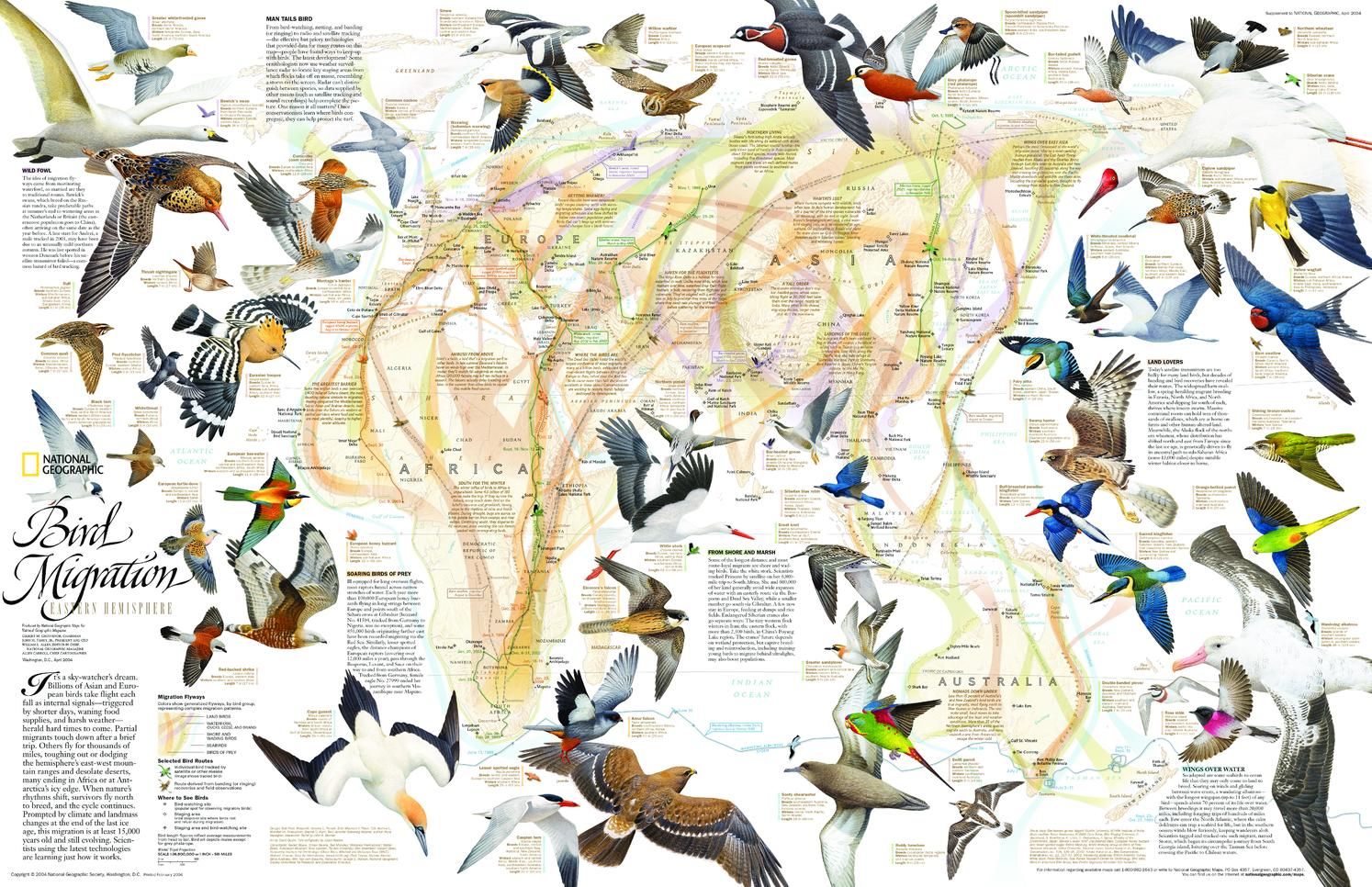
Bird migration in the Eastern Hemisphere
Copyright National Geographic Society.
Animal movement aka Movement Ecology
Movement of an organism, defined as a change in the spatial location of the whole individual in time, is a fundamental characteristic of life, driven by processes that act across multiple spatial and temporal scales. It plays a major role in determining the fate of individuals; the structure and dynamics of populations, communities, and eco-systems; and the evolution and diversity of life.
Coupling both movement and environmental big data could help determine impacts of major environmental and climate changes on animal - environment interactions, ultimately informing biodiversity conservation and ecosystem management.

